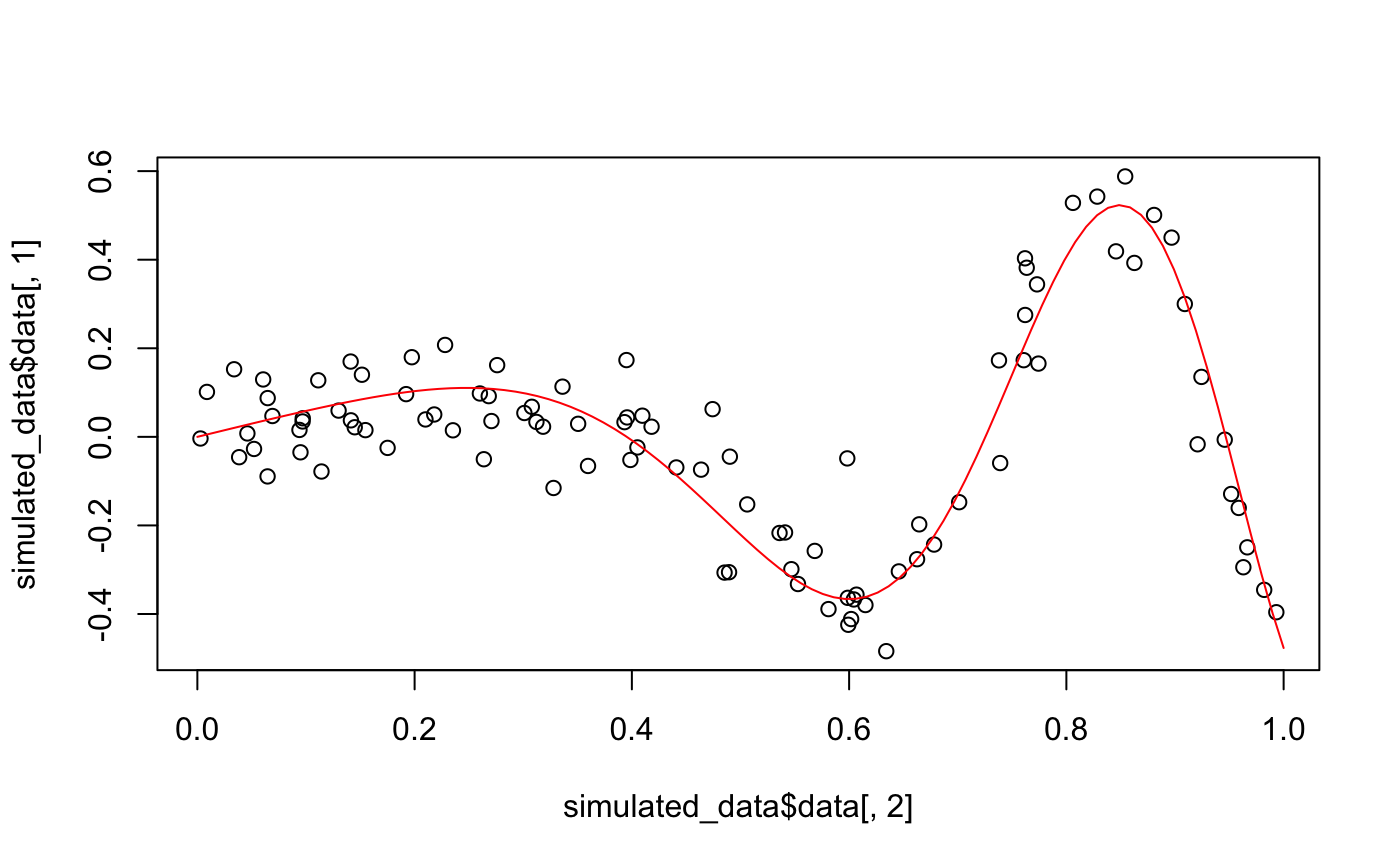This function creates simulated datasets to illustrate the use of gam3.
gamSim2(n, p, test.n, sigma, probs)
Arguments
| n | numeric value specifying the number of observations. |
|---|---|
| p | numeric value specifying the number of covariates. |
| test.n | numeric value specifying the number of observations in the test set. |
| sigma | numeric value specifying the standard deviation of the errors. |
| probs | numeric vector of length 6 specifying the proportion of covariates that are polynomial, linear, exponential, logarithmic, sinusoidal, and zero functions. |
Value
A named list containing data, functions, line, and test.
dataAn n\(\times\) p+1 dataframe containing the simulated data. The first column contains
the response, with all subsequent columns containing the covariates.
functionsA list of length p containing the true functions.
lineA character vector of length p containing the type of function used.
testAn test.n\(\times\) p+1 dataframe containing the simulated test data. The first column contains
the response, with all subsequent columns containing the covariates.
Details
This function creates simulated datasets to illustrate the use of gam3.
The covariates are sampled uniformly over $[0, 1]$, and their associated functions are randomly
chosen from polynomial, linear, exponential, logarithmic, sinusoidal, and zero using weights provided
in the probs argument.
Examples
set.seed(2018) probs <- c(0.1, 0.1, 0.1, 0.1, 0.1, 0.5) simulated_data <- gamSim2(n = 100, p = 1, test.n = 20, sigma = 0.1, probs = probs) # -1*2*x*sin(2.70259540737607*pi * x^2 - 1.3270146084221) sin.fun <- function(x) eval(parse(text = simulated_data$functions[[1]])) truth <- sin.fun(seq(0, 1, length.out = 100)) truth <- truth/diff(range(truth)) plot(simulated_data$data[, 2], simulated_data$data[, 1])
